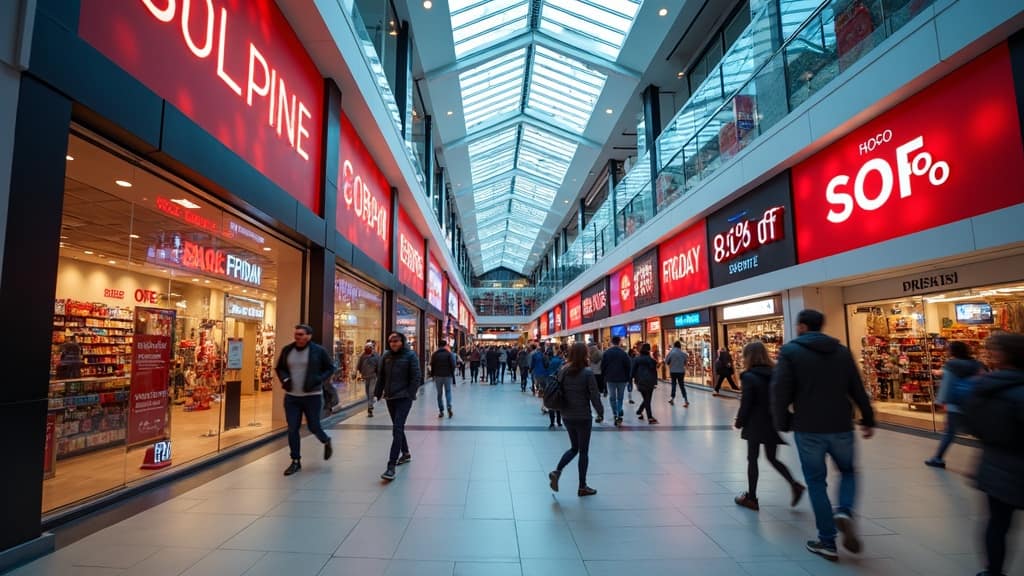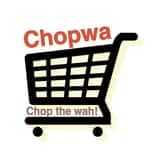
The History And Evolution Of Black Friday And Cyber Monday
Black Friday and Cyber Monday are now some of the biggest shopping days on the calendar, both online and in stores. Whether you love the buzz of the crowds or the thrill of snagging online deals, these days have turned into a worldwide phenomenon. I’m going to dig into how Black Friday and Cyber Monday started, how they’ve changed, and what they mean for shoppers, retailers, and even the economy.
The Origin of Black Friday
Black Friday’s roots actually go much further back than you might expect. The first mentions of the phrase “Black Friday” weren’t about shopping at all. In the 1950s, police in Philadelphia used the term to describe the chaos that happened the day after Thanksgiving, when huge crowds swarmed the city ahead of the annual Army-Navy football game, leading to traffic jams and overworked law enforcement. By the late 1960s, local retailers started using the term a bit differently to describe their busiest shopping day of the year, and it caught on fast.
Retailers later tried to spin the ‘black’ image to something positive, saying the day marked the point when stores ‘went into the black’ (turned a profit) for the year. Even if that’s not how the phrase started, the story stuck, and eventually Black Friday became known as the unofficial start to the holiday shopping season.
How Black Friday Shopping Became a Tradition
Throughout the 1980s and 1990s, Black Friday grew into a holiday tradition for families and shopping fans. Many people started lining up at stores before sunrise, hunting for doorbuster deals on everything from TVs to toys. News coverage of eager shoppers and crowded parking lots helped turn Black Friday into a pop culture event.
Big box stores like Walmart, Best Buy, and Target transformed Black Friday into a marketing opportunity, launching massive ad campaigns and ever-lower prices. For a lot of shoppers, the ritual of heading out with friends or family became just as important as the deals themselves. Almost every brick and mortar retailer joined in, and some started opening earlier and earlier, with the trend eventually spilling over into Thanksgiving Day itself, a change that plenty of folks found controversial.
The Birth of Cyber Monday
The growth of ecommerce in the late 1990s and early 2000s gave retailers a new way to reach shoppers, but stores noticed that web traffic and online sales still lagged behind the in store rush of Black Friday. In 2005, the National Retail Federation’s digital division coined the phrase “Cyber Monday” after noticing a spike in online sales the Monday after Thanksgiving. The theory? People browsed online during the holiday weekend, then waited to order from work computers with faster internet connections.
Retailers jumped on Cyber Monday almost right away. They rolled out online exclusive deals and ramped up email marketing to catch consumers back at their desks. What started as a digital afterthought quickly snowballed into one of the hottest days for online bargains. Today, Cyber Monday often outpaces Black Friday in total online sales, thanks to changing shopping habits and smartphone use.
From Storefronts to Screens: The Digital Switch Up
Black Friday and Cyber Monday started out pretty different—one in stores, one online—but now, the line between the two has blurred. Shoppers can grab deals on their phones, tablets, or laptops, and many brick and mortar stores post special offers on their own websites. Curbside pickup, sameday delivery, and contactless checkout have all become more common, especially since 2020.
This digital switch up has changed both events in a bunch of ways. Black Friday isn’t just about camping out in front of a big box retailer anymore. Many stores launch their Black Friday deals days (or even weeks) early, both in stores and online, while Cyber Monday has turned into a weeklong event for some retailers. Flash sales, time limited deals, and online “doorbusters” add to the excitement. At the same time, they create a shopping landscape that can feel a bit overwhelming, especially if you want to shop efficiently.
On top of that, the overlap between in store and online bargains means shoppers have more ways to find the best prices, but also more options to sift through. Some retailers offer price matching with their own online and offline deals, giving you more flexibility no matter how you prefer to shop. This mixing of digital and physical shopping experiences also encourages more innovation, as stores try to catch your attention with slick mobile apps, personalized notifications, and even augmented reality previews of products.
Retail Tactics or How Businesses Changed the Game
Retailers are pretty savvy about keeping up with consumer trends, and Black Friday and Cyber Monday have become ground zero for their newest tactics. Major stores often release “leaked” ads days ahead of time to spark buzz and help shoppers build wish lists. There’s always pressure to go bigger, with more aggressive discounting, bundle deals, loyalty programs, and real-time app alerts.
For online merchants, Cyber Monday has been a great opportunity to get creative. Some sites offer “hidden” promo codes or reward early shoppers with better deals. Dynamic pricing, where prices go up and down based on demand, has become more common, and automated bots sometimes sweep up hot ticket items before real shoppers get a chance.
Social media plays a growing role, with brands teasing special offers on Instagram, Facebook, and Twitter. Retailers are constantly adjusting their strategies to fend off competitors and attract deal hunters who can compare prices and reviews in just a few clicks. Influencers and user reviews, coupled with limited time exclusives advertised through platforms like TikTok or YouTube, build even more hype for both online and in-store events.
Common Challenges for Shoppers
Black Friday and Cyber Monday are known for their big rewards, but finding your way through hundreds of deals across multiple platforms takes some planning. Here are a few challenges I’ve noticed shoppers often run into during these events, and some quick tips for dealing with them:
- Deal Overload: There are so many discounts that it’s easy to lose track of what you actually need (or even what counts as a real deal). Make a list ahead of time to stay focused.
- Limited Stock: Doorbusters are usually in short supply, sometimes selling out in seconds. If you know what you want, set up accounts with major retailers in advance and be ready to act fast when deals go live.
- Shipping Delays: The rush to buy can create backlogs in warehouses, especially for popular items. Double check estimated delivery dates and review store policies on shipping and returns so you’re not caught off guard.
- Scams and Fraud: High traffic and urgency attract scammers. Stick to reputable sites (look for “https” in the address bar) and avoid clicking on suspicious links in emails or ads.
Deal Overload
Trying to sort through hundreds of deals can really eat up your time, and it’s easy to forget what’s actually on your wishlist. I find that staying organized ahead of time makes it less stressful. Sign up for deal alerts on items you care about, bookmark pages, and write down which stores to check first. Using simple comparison spreadsheets or apps can help you quickly spot the biggest savings.
Shipping Delays
With so many people shopping online, the holiday crunch puts a lot of pressure on shipping companies and retailers. Some delays are inevitable, especially if you score a deal on a high demand item. Picking up in stores or using curbside options can be pretty handy if you need something sooner. Make sure to check cut off dates for Christmas delivery to keep your gift giving on schedule.
Ways Black Friday and Cyber Monday Impact Shopping Overall
The rise of these mega sale days has shaped how people shop all year round. Some shoppers hold off on making big purchases until late November, while retailers use the buzz to pump up their whole fourth quarter. Over the past decade, more global markets have adopted their own versions of these sales events, even in countries that don’t celebrate American Thanksgiving.
Online only stores can compete right alongside retail giants, and small businesses often join in with their own unique discounts and promotions. The influence has even spread beyond physical goods, with discounts on travel, services, and digital products popping up during this window. In fact, some brands have crafted new shopping “holidays” inspired by Black Friday and Cyber Monday, like China’s Singles’ Day, which now pulls in billions of dollars in sales.
All these trends mean shoppers are not just waiting for one big day, but are now on the lookout for deals throughout the holiday season. Retailers respond by running extended promotions and exclusive one-day offers in the weeks leading up to Black Friday and Cyber Monday. This keeps excitement high and pulls in buyers who might otherwise skip the big shopping rush.
Frequently Asked Questions
Here are a few questions I’ve gotten from friends and readers about Black Friday and Cyber Monday:
Question: Where did Black Friday get its name?
Answer: The original meaning comes from Philadelphia police in the 1950s, referring to the heavy crowds and chaos the day after Thanksgiving. Retailers later rebranded it as the day when businesses went “into the black” (made a profit) for the year.
Question: Is Cyber Monday bigger than Black Friday?
Answer: Cyber Monday now generates similar, or sometimes higher, total online sales compared to Black Friday. People like shopping on their phones, and the convenience of snagging deals from home keeps Cyber Monday super popular.
Question: How do I find the best deals?
Answer: Sign up for store newsletters, check deal aggregator sites, and use browser extensions to compare prices. Make a plan ahead of time to avoid impulse buys, and double check return policies just in case.
What to Expect Next? The Future of These Shopping Holidays
Looking ahead, the boundaries between Black Friday and Cyber Monday will keep getting blurrier. Retailers have already started launching “Black Friday Month” or “Cyber Week” sales, stretching the deals out well past the original dates. As online shopping tools grow, you’ll probably see even more personalized offers, faster delivery, and creative new ways to shop.
Technology like AR showrooms, live video sales events, and AI powered tools that find the best price for you are starting to show up, too. Staying smart and planning ahead are the best ways to enjoy the buzz, and get the most out of the deals. Don’t forget to watch for new payment trends, like “buy now, pay later” services or digital wallets, which can make checking out smoother.
Black Friday and Cyber Monday always seem to have a surprise or two in store. It’s always interesting to see how the next chapter plays out for both shoppers and retailers. Whether you’re braving the crowds, shopping online from your couch, or just tracking the latest deals for fun, one thing’s for sure: these events have forever changed the way we shop.
Smart Shopper Guide GPT
Your dynamic, eco-conscious shopping assistant for personalized, sustainable choices.
Thank you for reading, comments and shares!
Create your own website
And learn how to monetize it
Heads up! If you’re looking to join Wealthy Affiliate, make sure you sign up using my referral link to get access to my personal coaching and all WA features."







